Two Winding Transformer Data
This dialog box includes the following areas and tabs:
- Database Dialog Box Toolbar
- Connection Information
- Specifications Tab
- Impedance Tab
- TCC Tab
- LTC (Load Tap Changer) Tab
- Harmonics Tab
- Stability Tab
See Common Tabs for information on the Location, Reliability, Comments, Hyperlinks, Media Gallery, or Collected Data tabs.
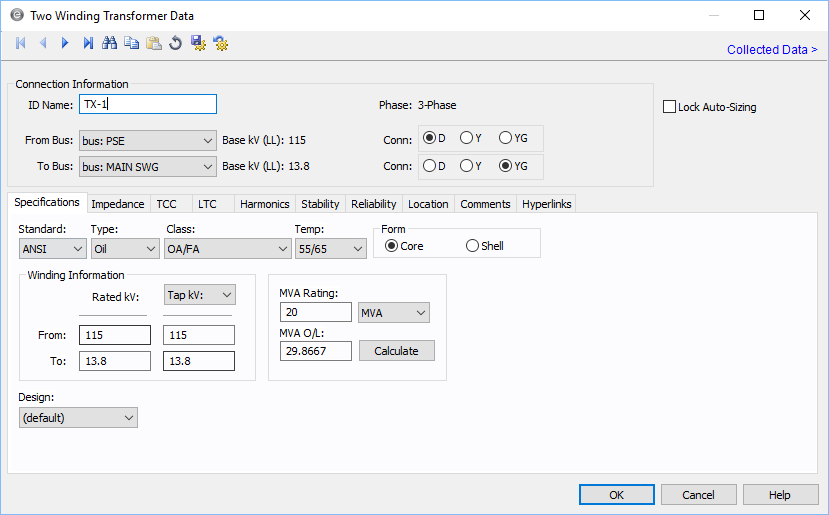
Figure 1: Two-Winding Transformer Data Dialog Box (ANSI)

Figure 2: Two Winding Transformer Data Dialog Box (IEC)
Connection Information
Specifications Tab
| Option | Description |
|---|---|
| Standard | Choose either ANSI or IEC. |
| Type | Type of cooling medium/insulation in the transformer (oil, liquid, gas, dry, silicone, or vapor). |
| Class | Type of cooling used by the transformer. Various combinations of forced air, water and forced oil are available. This field is used to determine the forced cooled rating of the transformer. |
| Temp |
Temperature rise rating of the transformer in degrees Celsius. |
| Form | Either core or shell type transformers can be selected. If Core is selected, the Z0% value on the Impedance tab is set to 0.85 of Z%. If Shell is selected, Z0% is equal to Z%. |
| Winding Information | |
| Rated kV | Rated kV of a winding. The rated kV can be different than the base kV or the tap kV. EasyPower automatically adjusts the model to account for different taps, turns ratio and bases you choose. |
| Tap kV / Tap% |
Tap kV of a winding. You can also specify the tap kV in terms of percentage of the rated value. If the actual tap kV is not known, enter the rated kV. Load tap changer control can be used to determine final tap settings if needed. EasyPower automatically adjusts the model to account for different taps, turns ratio, and bases you select. |
| MVA or kVA Rating | Self-cooled rating of the transformer. Use to select the unit in MVA or kVA. |
| MVA or kVA O/L | Forced-cooled rating of the transformer. In the absence of this data, use the Calculate button to estimate the forced-cooled rating based on the Type, Class and Temp values you enter. |
|
Design |
This option is used by the Power System Reliability module when mapping transformer data. The options are:
See Reliability for more information. |
Impedance Tab
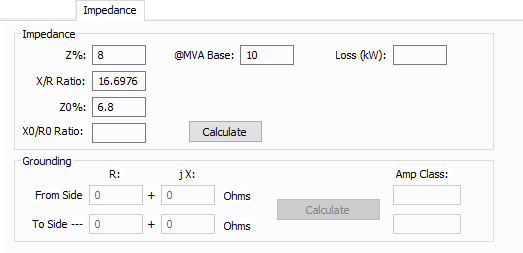
Figure 3: Impedance tab of Two-Winding Transformer Dialog Box (3-phase)
| Option | Description |
|---|---|
| Z% |
Transformer nameplate impedance in percent. By definition, this is the positive sequence leakage impedance in percent on the self-cooled MVA and nominal voltage rating. The strict definition is the percent of rated voltage impressed on the high voltage winding to produce rated full load current in the short circuited low voltage winding. If the Standard selected on the Specifications tab is set to IEC, the impedance is based on the MVA O/L value instead of the MVA rating. |
|
@MVA Base @kVA Base |
The base rating at which the Z% and Z0% impedances are applicable. The kVA or MVA text is displayed depending on the rating unit selected in the Specifications tab. When the field is blank, the program uses the standard ratings indicated on the Specifications tab to calculate the transformer per unit impedances:
You can also enter the MVA or kVA base values from the transformer datasheet or nameplate. When you manually enter a value, the entered value is used to calculate the per unit impedances instead of the standard ratings. |
|
Loss (kW) |
This is the kW losses at full load. Calculate uses this value to obtain the X/R ratio for the positive sequence impedance (Z%). The equation used is:
This field can be left blank. When this field is blank, the X/R ratio is estimated using the ANSI C37 curves. |
| X/R Ratio | Transformer reactance to resistance ratio, which is used to determine resistance value. |
| Z0% |
Transformer zero sequence leakage impedance in percent. If you don't know this value, enter the positive sequence impedance (Z) for shell transformers (see Form field above). For core transformers, use approximately 85% of Z. If you enter this value as zero (0.0), the positive sequence impedance is used. If Z% is entered, you can use Calculate to compute the Z0% value if it is blank. |
|
X0/R0 Ratio |
X/R ratio for zero sequence impedance (Z0%). Enter this data from the manufacturer, if available. If this field is left blank, zero sequence R0+jX0 values are calculated based on the positive sequence X/R ratio. |
|
Calculate |
Fills in a computed value for the X/R ratio. You can override this value by typing in a different number. If Loss(kw) is not entered, the calculated X/R ratio curve is based on the medium ANSI Standard curve [ANSI C37.010-1979]. This curve was developed mainly for power transformers and is typically high for low voltage unit substations less than 2500 kVA. If Z% is entered, you can use Calculate to compute the Z0% value if it is blank. |
|
Grounding Grounding impedances only apply to wye grounded connections. The units are R+jX in ohms. If you only know the ground amperes of the circuit, enter the amp class and use the Calculate button to calculate the grounding impedance. |
|
| R |
Transformer neutral ground resistance in ohms. This is the most common method of grounding the transformer neutral winding. Grounding resistors are usually given in amperes. The impedance is found from the following equation. R = Vln / I If the transformer is grounded through a separate grounding transformer with a secondary resistance, this resistance must be converted to the primary winding. Only wye grounded transformers are modeled with grounds. Mid or corner tapped delta windings are not modeled. |
| jX |
Transformer neutral ground reactance in ohms. |
| Amp Class |
This is the current in amps through the ground impedance at the rated voltage. You can enter data in this field directly in amps or calculate it based on the voltage and ground impedance R +jX using Calculate. |
|
IEC |
|
|
pT % |
For generator step-up (GSU) transformers, you can specify an impedance correction factor. The range is from -20% to 20%. This appears only if the option is set to Show fields and X/R calculations based on IEC 60909 in Tools > Options > Equipment. |
TCC Tab
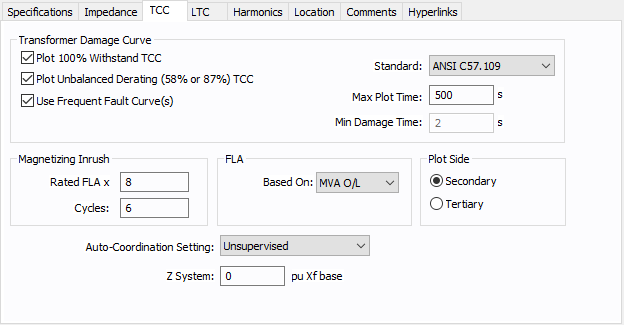
Figure 4: TCC Tab for the Transformer Data Dialog Box
LTC (Load Tap Changer) Tab
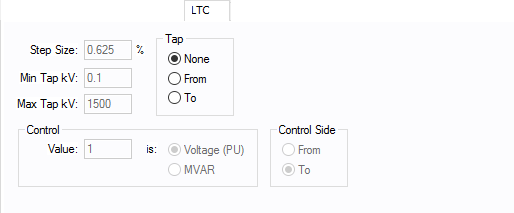
Figure 5: LTC tab of Two-Winding Transformer Data Dialog Box
Harmonics Tab
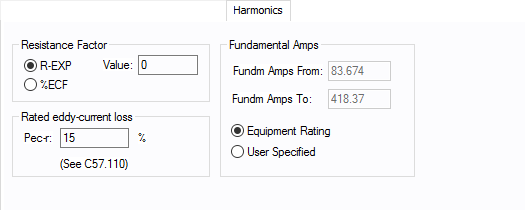
Figure 6: Harmonics Tab
Use the Harmonics tab to indicate whether this equipment item is introducing harmonics into your power system.
Resistance Factor
EasyPower offers two methods for calculating RH:
- Resistance varying with a power of the harmonic (R-EXP):
- Resistance varying with a percent eddy current factor (%ECF):
RH = RFund * H R-EXP
RH = RFund * (1+ECF*H2)/(1+ECF)
EasyPower defaults all skin effect correction to R-EXP and a value of 0.5.
| R-EXP | %ECF | |
|---|---|---|
|
Transformer |
0.5-1.0 |
1.0-3.0 |
|
Utility |
0.0-0.8 |
- |
|
Generator |
0.3-0.6 |
- |
|
Line/Cable |
0.5 |
- |
|
Reactor |
0.5-1.0 |
0.8-3.0 |
|
Motor |
0.2-0.4 |
- |
Fundamental Amps
Use to set the fundamental amps. The options are as follows:
- Equipment Rating sets Fundm Amps to the equipment rating of the item described in the Specifications tab.
- User Specified activates the Fundm Amps field, enabling you to specify a value.
To use fundamental current calculated by power flow, select Calculated from Power Flow in the Summation Fundamental Voltage area of the Harmonics Options > Control dialog box.
Stability Tab
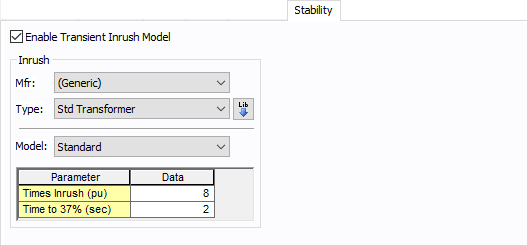
Figure 7: Stability Tab
| Option | Description |
|---|---|
| Enable Transient Inrush Model |
Select the check box to enter stability information. |
| Mfr | Provides a list of manufacturers available in the device library. If the desired manufacturer is not listed in the device library, you can add it to the library. |
| Type | Equipment types available from the selected manufacturer. If the desired type is not listed, you can add it to the library. |
| Model | Equipment models available from the selected equipment type. If the desired model is not listed, you can add it to the library. |
 Lib Lib |
Populates the table with equipment data from the library. See EasyPower Device Library for more information. |
Other Tabs
See Common Tabs for information on the Location, Reliability, Comments, Hyperlinks, Media Gallery, or Collected Data tabs.
More Information
| Database Technical Reference | Common Tabs |
| Media Gallery |

